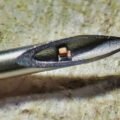It’s no surprise that Americans have a problem with sugar. The average American consumes more than the recommended limit of 9.5 teaspoons of added sugar a day. In order to get around the unhealthy benefits of sugar, many individuals have switched to artificial sweeteners. While the tongue may not be able to distinguish between the fake and real thing, researchers at Duke University have found that the gut can definitely tell the difference.
Background: The Popularity of Artificial Sweeteners
Artificial sweeteners, like Stevia, are a common ingredient in many food products, as they contain less sugar and fewer calories. As they’ve created in a chemistry lab, artificial sweeteners usually have 200 to 600 times the sweetness of sugar, making them dangerously addictive. One study found a strong correlation between artificial sweeteners and weight gain. This could be due to the sweeteners tweaking taste and hunger receptors in the body, making people not feel full or satisfied after a meal. Many individuals use artificial sweeteners because they do not usually raise blood levels or stimulate higher insulin levels, which can be beneficial for diabetics. But the pairing of the gut and artificial sweeteners can be also unhealthy.
While artificial sweeteners can offer benefits for some, they also can alter how your body perceives sweetness. One study found that artificial sweeteners can make fruits and other naturally sweet foods seem less appealing, tricking the brain into eating more unhealthily. Though the tongue may enjoy the overpowering taste of artificial sweeteners, the gut has an entirely different story to tell.
Analysis: The Gut and Artificial Sweeteners
To better understand the relationship between the gut and artificial sweeteners, a team from Duke University, led by Dr. Diego Bohórquez, looked into the gut’s structure. From their analysis, they identified the specific cells in the gut that process sugar, called the neuropod cell. From injecting sugar directly into the intestines, the researchers found that the neuropod cells are located in the upper areas of the gut, closer to the stomach. These neuropod cells play a special role in digestion, as they communicate directly with the brain via synaptic connections in the lining of the gut. This makes the neuropod cells act similar to receptor cells. “These cells work just like the retinal cone cells that are able to sense the wavelength of light,” explained Bohórquez. “They sense traces of sugar versus sweetener, and then they release different neurotransmitters that go into different cells in the vagus nerve, and ultimately, the animal knows ‘this is sugar’ or ‘this is a sweetener.'”
Before publishing their results in Nature Neuroscience, the team of researchers used lab-grown organs from human and mice cells to stimulate the difference in detection between sugar and artificial sweetener by the neuropod cells. They found that the cells release different neurotransmitters as sugar stimulated the release of glutamate, while artificial sweeteners stimulated the release of ATP.
Outlook: The Gut as a Second Brain
According to the co-first author Kelly Buchanan, a previous student at Duke University, and now a resident at Massachusetts General Hospital: “Many people struggle with sugar cravings, and now we have a better understanding of how the gut senses sugars (and why artificial sweeteners don’t curb those cravings).” Knowing how the gut responds to artificial sweeteners is important for the healthcare industry, and could also have large implications for the nutrition and exercise industries in the future.
Kenna Castleberry is a staff writer at the Debrief and the Science Communicator at JILA (a partnership between the University of Colorado Boulder and NIST). She focuses on deep tech, the metaverse, and quantum technology. You can find more of her work at her website: https://kennacastleberry.com/
